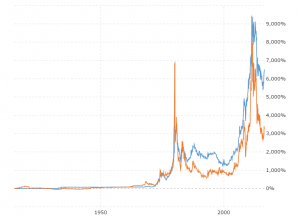The Ins and Outs of Coin Grades
Last week America’s largest coin graders, the Numismatic Guaranty Corporation, who operate in both Florida and Shanghai, announced that since their founding in 1987, NGC have graded 40 million coins. New coin collectors soon learn about ‘proof’ and ‘uncirculated’ grades, but what is so important here, that a company can be successful simply grading coins?
Anyone can quickly see that coins are not all equal. Some are worn and scratched, while others are pristine and appear perfect. Collectors value perfection, so the more perfect the coin, the higher its value. This can apply not just to old coins, but new ones too, where coins with an exceptional grade command a premium price right from the beginning. At one time, collectors and dealer used words like ‘Excellent’, ‘Good’, or ‘Fair’ to describe the quality of a coin, but all to often the dealers ‘Good’ turned out to the buyer to just be a ‘Fair’, so something more precise was needed.
In 1948 a renowned collector of the time, Dr. William Sheldon, set out to solve this problem. He developed a scale of 1 to 70 for coins, where ‘70’ was absolutely perfect, and ‘1’ was so poor and damaged that only a date and mint mark could be clearly identified. His theory was that a coin worth ‘70’ would be worth seventy times the same coin that graded as ‘1’. His system became the Sheldon Scale, and today it is the universal standard.
The Sheldon Scale is combined with the degree of care taken in actually making the coin. Two levels of production are recognized:
- Uncirculated, or Mint State. These are normal production coins that have never been used as currency – fresh from the mint. There are graded, when new, from MS-60, which would be heavily marked, although new, to MS-70, a perfect coin of uncirculated quality.
- Proof. These are coins that have been produced to a higher standard. They may have been stamped more slowly, or double-stamped to ensure clarity and depth. The die used to make them will have been specially prepared too. Because of the extra care, these are intrinsically higher quality. Proof coins are graded like uncirculated coins, form PU-60 to PU-70.
Once a Mint State coin hits the streets, it becomes circulated. However some coins in circulation have received very little wear, perhaps because they have sat in a vault or safe somewhere for years. These are ‘about uncirculated’, that is, almost uncirculated, and are labelled AU. Grades for these coins range from the poorest, AU-50, which may simply have a few scuff marks, to AU-59, which can be a better-looking coin than the MS-60 above it, but it has been in circulation, which means it value has automatically dropped.
Further down the scale are the coins that have truly been in circulation. The top are the Extremely Fine coins, graded in the 40’s. XF-45, for example. Then there are the Very Fine coins, graded in the 20’s and 30’s. Below these grades are Fine coins, graded in the teens, but above Very Good, Good, About Good, Fair and Poor coins, graded downwards from 10 to 1.
Now, when you see a graded coin, with that strange combination of letters and numbers, you will know what it all means.








